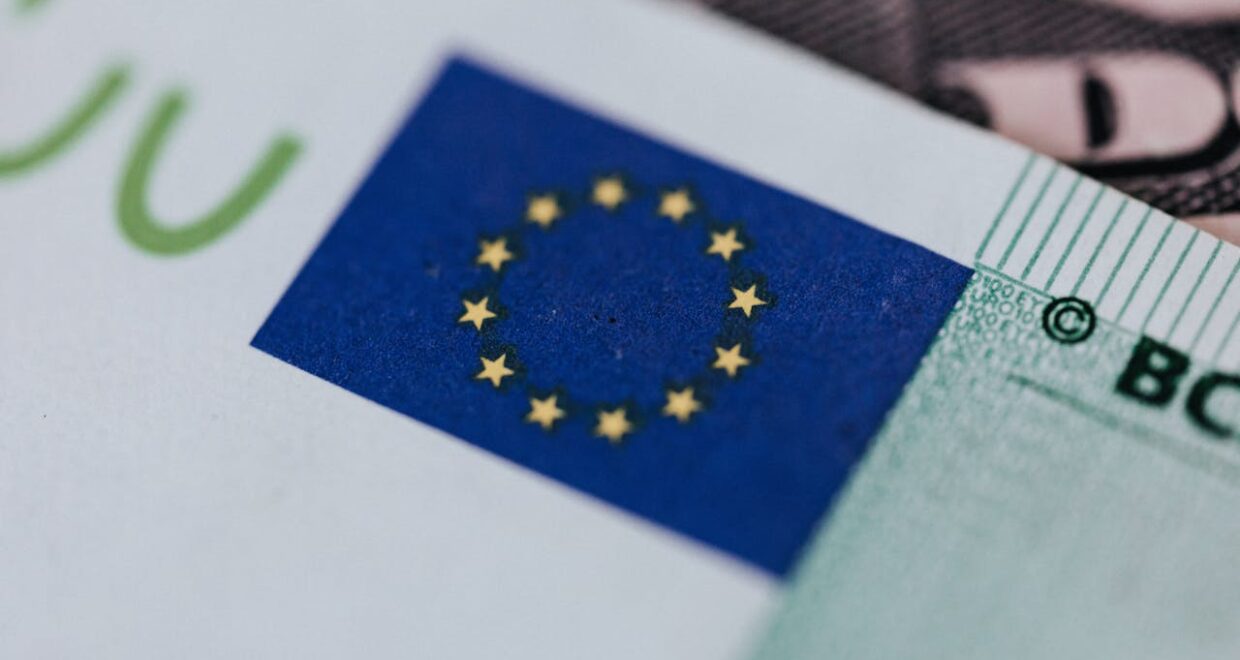Strategic Litigation in EU Law
In a new special issue of the German Law Journal, guest editors Pola Cebulak, Marta Morvillo and Stefan Salomon trace the rise of ‘Strategic Litigation in EU law’. The key perspective is to ask how open the EU legal order and its many subfields are to strategic litigants and who is empowered by such litigation.
The increase of strategic litigation marks a shift within EU law, a field in which civil society actors have traditionally turned to lobbying, advocacy, and activism to influence policy. This left the Court of Justice of the EU (CJEU) somewhat peripheral in the strategies of public-interest litigators, while national courts and the European Court of Human Rights were more commonly leveraged for direct legal action. However, in the past two decades, the CJEU has become a focal point for cases addressing politically charged and socially divisive issues—ranging from environmental protection and migration to digital rights.
Contributions to the Special Issue engage with these three distinct legal areas, reflecting different social contexts, each with its own set of actors, strategic choices, and legal narratives. Tying in with a growing interest in law as a tool for social transformation, the Special Issue hence offers the first systematic account of strategic litigation as a driver of EU law and policy development across fields. Authors are both scholars and legal practitioners directly involved in strategic litigation.
A particular gem deserves mention upfront—the Special Issue does not only come as text, but is accompagnied by a podcast! Guest editor Marta Morvillo conducted an interview with Marta Pardavi and Grusa Matevzic from the Hungarian Helsinki Committee, a Budapest-based NGO that provides help to refugees, detainees and victims of state violence through litigation and advocacy. With gripping stories of landmark cases, practical insights into navigating EU law, and a candid look at the pressures and triumphs of litigation in politically charged environments, this conversation is a real must-listen.
**
Turning to the textual content of the Special Issue, here is what you will find:
After a brief editorial, Pola Cebulak, Marta Morvillo and Stefan Salomon open the Special Issue with a framing paper introducing a methodological approach to studying strategic litigation within the EU. The guiding impetus is to approach strategic litigation as both contextual and normatively open. The contextual nature stems from every litigation’s embeddedness in specific social, institutional, and economic settings that determine possibilities for broader mobilization and extra-judicial strategies. The normative openness pertains to the wide spectrum of agendas—both progressive and conservative, public-interest and private-interest driven—that is pursued by both powerful and marginalized actors.
The subsequent contributions are structured around the three key stages in the life of strategic litigation: the framing of a case, the litigation phase, and the aftermath of a case.
The first section engages with the motivation, coalition building and strategic decisions that take place before a case is brought. Alberto Alemanno discusses structural obstacles that have hindered legal mobilization in the EU. Adopting the lens of participatory democracy, he finds that EU courts must create a participatory environment that actively supports the ability of ordinary citizens to engage in the Union’s democratic processes.
Justin Borg-Barthet and Francesca Farringdon examine the achievements and limitations of the EU’s recent efforts to combat Strategic Lawsuits Against Public Participation (SLAPPs), abusive legal actions designed to suppress public engagement and stifle dissent. The authors discuss the scope and procedural safeguards included in the Anti-SLAPP Directive of 2024 as well as circumvention strategies rooted in private international law.
Andreas Hofmann draws on data from a large-scale survey of interest groups across eight EU member states to detail the drivers behind strategic litigation and to identify which groups are most likely to engage in it. His findings suggest that EU law offers opportunities for a diverse range of actors, with no particular bias toward one type of interest, although resources, coalition-building, and access to legal expertise increase the likelihood of engaging in strategic litigation.
Next, Sofie Fleerackers examines corporate strategic litigation within the EU Emissions Trading System (EU ETS), focusing on how industries like Iron and Steel shape its development through legal and political advocacy. While the EU ETS caps carbon emissions and serves as the EU’s primary climate policy tool, corporate litigation challenging its framework has been overlooked, dismissed as routine. The paper critiques this bias, advocating for a broader definition of strategic litigation that includes private economic actors.
Adam Ploszka examines the role of strategic litigation in Poland between 2015 and 2023, during a period of democratic backsliding. Despite efforts to weaken the judiciary, strategic litigation became a crucial tool for defending human rights and the rule of law, particularly through cases brought before the CJEU. Ploszka underlines the involvement of new actors like the Human Rights Commissioner and corporate entities.
Dion Kramer’s contribution, based on his work with homeless EU citizens in the Netherlands, explores the interplay between litigation and advocacy in legal mobilization. The article exposes how Dutch municipalities have systematically denied homeless EU citizens equal access to overnight shelters and describes the different strategic efforts of a broad coalition of homelessness organizations and legal experts to push for the proper implementation of EU rights.
Opening the second section of the Special Issue—dedicated to the litigation phase itself—is Mario Pagano’s contribution on strategic litigation under the EU Aarhus Regulation after its 2021 revision. Analyzing case studies on the National Energy and Climate Plans (NECPs) and the Taxonomy Regulation, it demonstrates how the reformed Aarhus Regulation has shifted from an administrative to a scientific dispute resolution forum.
Francesca Palmiotto and Derya Ozkul turn to EU data protection law to illustrate how civil society organizations are empowered to pursue strategic litigation against automated systems in migration and asylum. Through an analysis of five case studies and in-depth interviews, the authors find that the pre-litigation phase, characterized by barriers such as algorithmic opacity, resource-intensive preparation, and delays from data protection authorities, is especially burdensome.
Swee Leng Harris investigates the role of private enforcement under the GDPR, DSA, and DMA in advancing internet users’ digital rights, highlighting its potential to address regulatory fragmentation and empower civil society. The DSA and DMA, newest additions to the EU’s digital agenda, expand regulatory frameworks but centralize enforcement in the European Commission, limiting civil society’s role.
Virginia Passalacqua explores the social and institutional factors that influence legal mobilization for migrants’ rights in Greece. She observes that Greek judges have not engaged in the judicial dialogue provided for in the preliminary reference procedure and identifies structural barriers, such as limited access to higher courts, and a lack of strategic use of EU legal tools by civil society actors.
Still on the topic of migrants’ rights in Greece, Elli Kriona, a practitioner in the field, examines Greece’s 2020 legal framework mandating the registration and certification of migration NGOs and their members, introduced amid rising hostility toward civil society actors. Kriona provides an overview of the measures’ restrictive requirements, critiques their non-compliance with fundamental rights, and details the EU-law-based litigation initiated by Greek civil society organizations to challenge them.
A third and final section then considers the ‘afterlife’ af strategic litigation—its political, social, and legal impact beyond the courtroom. Reilly Willis opens this section analyzing how claimants’ voices are featured in environmental litigation at the CJEU, pointing to the risk that strategic litigation, while aiming to advance jurisprudence and address environmental harms, may silence those most affected by environmental degradation.
Christina Eckes discusses the interplay between EU law and national climate litigation, highlighting the challenges of holding Member States accountable for inadequate climate policies within the EU’s multilayered legal framework. She argues that national courts must ensure robust judicial review of national climate policies, as EU law neither precludes such scrutiny nor absolves states from broader legal and democratic responsibilities.
Using the examples of joined cases C-368/20 and C-369/20 where he himself served as applicant, Stefan Salomon explores the legal and political aftermath of strategic litigation case on Austria’s internal border controls and the broader Schengen crisis. Despite the ruling limiting the reintroduction of internal border controls under the Schengen Borders Code, Member States continued these controls, later legitimizing them through amendments to the Code. Salomon argues that effective implementation of preliminary rulings hinges on the interplay of strategic litigants, national courts, and the European Commission.
The final contribution comes from Catherine Forget, examining strategic litigation against systematic data collection under the Passenger Name Record (PNR) Directive. She focusses on the Ligue des droits humains case before the CJEU (C-817/19), a case that leveraged a Belgian legal provision allowing associations to challenge laws directly. The CJEU’s review of the Belgian PNR Law extended beyond litigants’ arguments to broader legality and proportionality concerns.
We hope you find this collection as illuminating as we do—with strategic litigation as a productive lens to study EU law and its role in the socio-economic transformation.
Klaas Hendrik Eller
on behalf of the GLJ Editors-in-Chief






